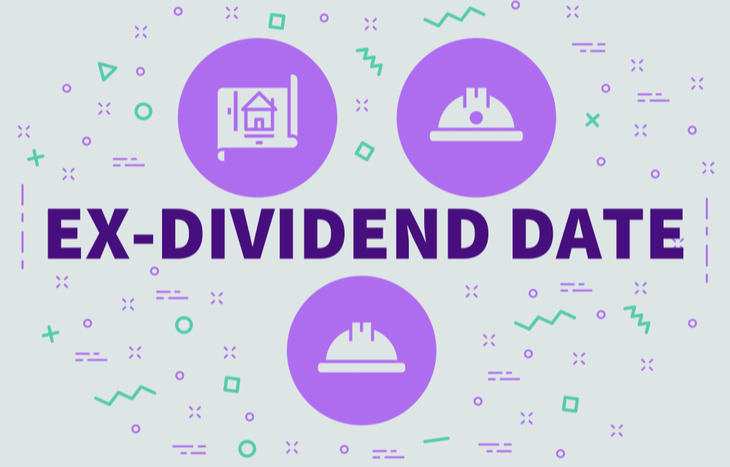What Is an Ex-Dividend Date?
When investing in dividend stocks, ex-dividend date is an important term to understand. Also called “ex-date” for short, it’s the cutoff date for dividend eligibility. A stockholder must own the stock prior to the ex-date in order to be eligible for its upcoming dividend payout. Typically, a stock’s price falls on this date to reflect the value of the upcoming dividend payment.
There are a number of reasons to understand the ex-dividend date. Not only does it qualify you for the dividend payment, but also it affects the stock’s trading price and can influence when to buy or sell a dividend-paying stock.
Here’s what investors need to know about the ex-date and how to plan accordingly to reap the benefits of a dividend payout.

The Process of Issuing a Dividend
To understand the ex-date in context, it’s best to look at the entire process of a dividend payment. That means also understanding all three major dates associated with the payout:
- Declaration date. This is the date the board of directors announces the intended dividend payment. This means the intent to pay a dividend is public, and investors know the amount of the dividend.
- Record date. This is the date the company examines its books to verify shareholders to determine who will receive the dividend payment. If you hold stock on this date, you’re eligible to receive the payout.
- Ex-dividend date. This is the date by which investors must purchase shares to receive the dividend. It’s typically one to three business days before the record date. It follows a T+1 settlement rule, which accounts for the time it takes stock trades to settle.
- Payment date. This is the date on which shareholders receive payment in the amount of the dividend. If you have a DRIP program, it’s the date on which new and fractional shares are purchased.
This process is the same for every dividend-paying company. It also applies regardless of the dividend payout interval, which could be monthly, quarterly or annually.
Example of the Dividend Process
To understand the dividend process better, let’s look at a real-world example: Navient Corporation (Nasdaq: NAVI). As of August 2021, the company pays a quarterly dividend with a 2.97% dividend yield.
- Declaration date: 5/20/2021
- Record date: 6/4/2021
- Ex-dividend date: 6/3/2021
- Payment date: 6/18/2021
In this instance, the company paid out its dividend to shareholders on June 18, 2021. Investors needed to purchase shares in the company before the ex-dividend date of June 3, 2021. The company previously declared the dividend on May 20, 2021, which meant only shareholders who held the stock on June 4 received the payment.
The T+1 Settlement
The reason for an ex-dividend date is simple: There’s a delay between when an investor controls ownership of a stock and when the company updates its books. For investors and trades, stock transactions happen in real time. But behind the scenes, the process is much more drawn out. In fact, stock trades take three days to settle.
- On the first day, an investor submits the trade.
- On the second day, funds settle.
- On the third day, the company enters the trade into its records.
This is why the ex-dividend date is three days before the record date. This timeline represents T+1: the days it takes for the trade to settle.
Stock Price Behavior Around the Ex-Dividend Date
More than just “last call” for traders to purchase the stock, the ex-dividend date also marks a shift in stock price behavior. Because the ex-dividend date is when the stock starts trading without its dividend value, it may garner less attention from investors. Where a stock may see a flurry of activity between the declaration and ex-date, it may see a slowdown of activity between the ex-date and the payment date.
It’s also expected for the stock price to drop by roughly as much as the dividend at the ex-dividend date. While this is often negligible for smaller companies, larger dividends can cause stock prices to drop in most established companies. Dividend aristocrats often see a small drop in share price at the ex-dividend date.
Other Key Dividend Terms to Know
The ex-dividend date is just one term dividend investors need to be familiar with. Some of the other important concepts to get familiar with and observe include…
- Declaration date. The date the board of directors announces a dividend.
- Record date. The date the company reviews shareholder records to determine payouts.
- Payment date. The date the company issues a dividend payment to shareholders.
- Dividend yield. The percentage of a dividend payout in relation to share price.
- DRIP. Dividend reinvestment plan, which uses dividend payouts to purchase stock.
These are all terms to especially note if you’re building a dividend portfolio or establishing a passive income portfolio. They’re important for understanding what dividends you’re entitled to and how often as well as what those payouts amount to.
Stay Apprised of the Ex-Dividend Date
Dividend stocks are a strategic investment for many reasons – not least because of the certainty of the scheduled payouts they offer. To capitalize on dividend payments, investors need to make sure they’re on the company’s books when it comes time to verify dividend recipients. It’s as simple as paying close attention to the ex-date.
In fact, dividends are a great way to build passive income for your retirement. To learn more, sign up for the Wealthy Retirement e-letter below.
Remember, even if you’re already a shareholder, observe the ex-date and the T+1 settlement period when adding to your position. This will ensure you’re getting a dividend payout for every share you hold – or the additional shares that come from a DRIP.





